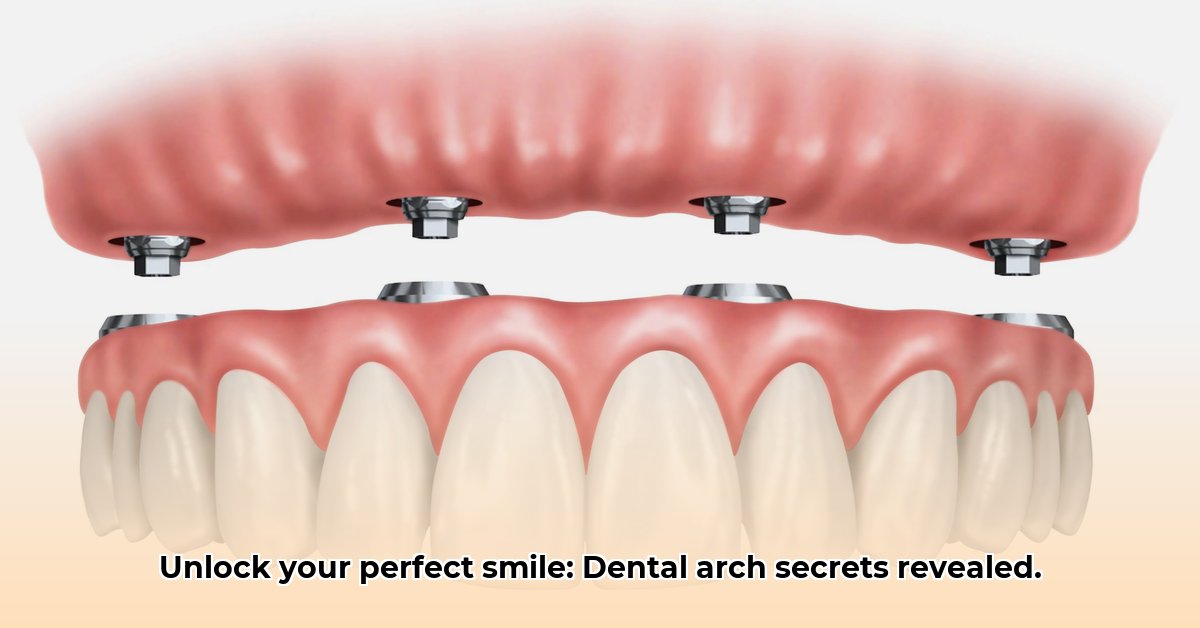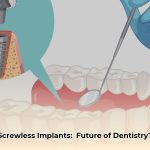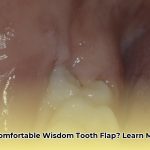Ever noticed the graceful curve of your teeth? That’s your dental arch—the hidden foundation of your smile, and a lot more. It’s not just about how you look; your dental arches are key players in chewing, talking, and even the shape of your face. This article takes you on a journey to understand your upper (maxillary) and lower (mandibular) arches. We’ll explore what happens when things go wrong (like a bad bite, or malocclusion), the different ways to fix it, and most importantly, how to keep your arches healthy and happy for years to come. For those considering implants, learn more about implant options. Get ready to discover the secrets of your smile!
What is a Dental Arch? Understanding Dental Anatomy
Ever wondered about that perfectly curved row of teeth? That’s your dental arch! We actually have two – one in the upper jaw (maxillary arch) and one in the lower (mandibular arch). They’re more than just pretty smiles; these arches are vital for eating, talking, and even how your face looks. Think of them as the foundation of your bite, working together in perfect harmony (ideally!). A dental arch refers to the crescent-shaped arrangement of teeth in each jaw.
Getting to Know Your Dental Arches: A Closer Look at Jaw Structure
Let’s dive a bit deeper. Your dental arch isn’t just teeth; it’s a complex system. It includes the alveolar bone (the bone that holds your teeth roots), your gums (gingiva), and the periodontal ligaments (tiny, strong tissues that anchor your teeth). Imagine it like a beautifully crafted bridge, with the teeth as the keystone bricks, all securely nestled in the bone. The size and shape of your arches are unique to you, a mix of your genes and things that happened to you throughout your life. No two are exactly alike! In a typical adult, the maxillary arch houses 16 teeth, as does the mandibular arch, for a total of 32 teeth, including wisdom teeth.
The Amazing Work Your Arches Do: More Than Just a Pretty Face
Your dental arches are busy little things! They’re essential for chewing. They break down food, getting it ready for digestion. They also play a key role in speech, enabling us to form all those different sounds clearly. Beyond that, the way your arches line up greatly influences your facial features. A nice, straight arrangement contributes to a balanced and pleasing facial profile. So, it’s not just about a pretty smile; it’s about functionality and aesthetics working hand-in-hand. Did you know that properly aligned dental arches contribute significantly to both clear speech and effective chewing? The dental arches ensure the teeth meet correctly (occlusion) for efficient grinding and cutting of food.
When Things Go Wrong: Malocclusion
Sometimes, things don’t quite align as they should. That’s called malocclusion, or a misalignment of your teeth and/or jaws. There are a few main types:
- Class I Malocclusion: Your upper and lower molars fit together nicely, but some individual teeth might be crooked or rotated. This is the most common type of malocclusion.
- Class II Malocclusion: Your upper jaw sticks out too far compared to your lower jaw (often called an overbite).
- Class III Malocclusion: Your lower jaw sticks out too far compared to your upper jaw (often called an underbite).
These misalignments can make it harder to chew your food properly, affect how you speak, and even impact your confidence. They can also potentially increase the risk of cavities and gum disease because it can be more challenging to clean your teeth thoroughly. Malocclusion can result from genetics, developmental issues, or habits developed in childhood.
Fixing the Alignment: Treatment Options
The good news is that there are many ways to fix misaligned teeth and jaws. Orthodontics is the specialized field that deals with this.
| Treatment Option | Pros | Cons |
|---|---|---|
| Traditional Metal Braces | Proven effective, versatile for many different types of misalignment | Can be noticeable, might cause some discomfort, need regular adjustments |
| Clear Aligners (Invisalign) | Discreet, removable for easier cleaning | May not be suitable for all cases, requires good patient compliance |
| Other Orthodontic Options | Expanders, headgear, and in severe cases, surgery. | Effectiveness varies, some options can be more invasive and require longer treatment |
The best option really depends on the severity of the problem, your personal preferences, and what your orthodontist recommends. They’ll help you choose a treatment that is right for you. Orthodontic treatments aim to guide the teeth into their correct positions within the dental arch.
Keeping Things Straight: Prevention is Key for a Healthy Smile
The best way to deal with malocclusion is to prevent it in the first place! Good oral hygiene habits, starting early in life, are crucial. This means brushing and flossing regularly. Regular checkups with your dentist or orthodontist are also vital, especially in children. Early detection of smaller problems can prevent bigger, more complicated issues down the road and make treatment easier. Early intervention really can make a significant difference.
Regular dental checkups allow for early identification of any minor misalignments. These minor issues often can be addressed early, preventing the need for extensive treatment in the future. Consistent brushing and flossing habits, coupled with regular check-ups, build the foundation for a lifetime of healthy teeth and correctly aligned arches. These measures are preventative steps that contribute to the long-term health and proper alignment of your dental arches. Moreover, discontinuing habits like thumb-sucking early on helps prevent malocclusion.
Understanding Your Dental Arch: How to Choose the Best Orthodontic Treatment for Short Dental Arches
Key Takeaways:
- Your dental arch’s shape significantly impacts your smile and bite.
- Short dental arches often require specialized orthodontic care.
- Several treatment options exist, each with pros and cons.
What is a Dental Arch? Jaw Alignment and Dental Health
Your dental arches are the curved bony structures in your upper (maxillary) and lower (mandibular) jaws that hold your teeth. Think of them as the foundation for your smile. Their size and shape influence your bite, facial appearance, and overall oral health. A short dental arch means the available space for your teeth is limited, potentially leading to crowding and misalignment. The ideal arch shape facilitates even distribution of bite forces.
Understanding Short Dental Arches and Bite Issues
Short dental arches present unique challenges. Crowded teeth, an overbite, or an underbite can result. These issues not only impact the aesthetics of your smile, but also affect chewing, speech clarity, and long-term oral health. Misalignment can lead to TMJ disorders in severe situations.
Diagnosing the Problem: Orthodontic Examination
A comprehensive orthodontic examination is crucial for proper alignment evaluation. Your orthodontist will evaluate your teeth, jaw alignment, and overall facial structure. X-rays and digital scans provide a precise picture of your arch’s dimensions and potential underlying problems. These diagnostic procedures help determine the appropriate treatment strategy.
Orthodontic Treatment Options for Short Arches
Several treatments are available to correct short dental arch issues; how to choose the best orthodontic treatment for short dental arches depends on your specific situation. Did you know that surgical orthodontics are sometimes required for severely short dental arches?
-
Traditional Metal Braces: These remain a reliable option, particularly for complex cases requiring significant tooth movement. They offer robust control and are generally cost-effective. Metal braces use brackets and wires to gradually shift the teeth.
-
Clear Aligners (Invisalign): A more discreet alternative, ideal for mild to moderate crowding. They offer convenience and comfort, but may not be suitable for all cases. Clear aligners are custom-made and virtually invisible.
-
Surgical Orthodontics: For severe cases, surgery may be necessary to expand the jawbone and create more space for the teeth. Surgical orthodontics involves realigning the jaw bones to improve bite and aesthetics.
Comparing Treatment Options
| Treatment | Pros | Cons | Cost | Suitability |
|---|---|---|---|---|
| Metal Braces | Effective for complex cases; cost-effective | Less aesthetically pleasing; potential discomfort | Low-Moderate | Severe malocclusion |
| Clear Aligners | Discreet; comfortable; convenient | May not be suitable for all cases; higher initial cost | Moderate-High | Mild to moderate malocclusion |
| Surgical Orthodontics | Addresses severe jaw discrepancies | Invasive; longer recovery time; higher cost | High | Severe jaw discrepancies and malocclusion |
Prevention and Early Intervention for Optimal Alignment
Early intervention is key. Regular dental checkups, starting in early childhood, allow for early identification of potential problems. Good oral hygiene practices also play a vital role in minimizing the risk of crowding and misalignment. Regular dental visits enable early detection and management of dental arch problems.
Choosing the Right Treatment: A Personalized Approach to Achieve a Healthy Smile
The best treatment depends entirely on your individual needs. A consultation with an experienced orthodontist is crucial to discuss options and develop
- How Did Charles F. Brush Discover Wind Energy Tech? - November 19, 2025
- Wind Energy Vertical: Weighing the Pros and Cons of Wind Power - November 16, 2025
- How Much Energy Does a Wind Turbine Actually Create? - November 14, 2025
















